FILMMAKING IS EASY…LIFE IS DIFFICULT. (Follow 14 Steps & Profit)
by Dov S-S Simens on March 28, 2017
WANT TO WRITE, PRODUCE & DIRECT?
Want to make a Movie? Want to profit? Want to play Hollywood but still live (Atlanta, London, Kathmandu, Buenos Aires, Dubai, etc.) in your hometown?
Thanks to digital technology, social media marketing and on-demand revenues. This is quite possible.
Filmmaking is easy… Life is difficult.
Actually I lied… Nothing is easy. Especially making profitable movies.
Why? Because it also takes talent, which I can’t teach.
Plus, it takes a work ethic, which I can’t teach.
Further, it takes a thing called “God” to-like-you for whatever reason, which I can’t teach.
However, if you have amazing talent, a tremendous work ethic, true patience and God likes you then I believe…
…Making a profitable movie is easy… just follow these 13 Steps.
So let’s start with an idea…
STEP 1: GET AN IDEA.
Where do great ideas come from? Watching tv news, reading daily papers, listening to songs, viewing old movies, talking with friends, staring at lovers holding hands, watching children interact with adults, wondering “what ifs” or “how abouts”… Nobody knows but I’m sure that you are sure that yours is great.
OK. But remember…
 (“Ideas are everywhere. Now take your idea, write a treatment and register it… Now you own a thing and can prove when you created it. But CYA-CYA-CYA.”)
(“Ideas are everywhere. Now take your idea, write a treatment and register it… Now you own a thing and can prove when you created it. But CYA-CYA-CYA.”)
…if you have an idea and you tell it to someone then they can do it without you… for no one owns an idea.
Thus, your first job becomes writing your great idea into a form that you can own… which is a Treatment…
thus, the next step, after having a great idea, becomes writing a Treatment… for this becomes something that you own.
STEP 2: WRITE A TREATMENT.
A Treatment is a prose synopsis of your movie, which right now is merely a thought.
Producers & Writers in Hollywood always say that a great story has three acts.
ACT I. ACT II. ACT III.
OK. So take your idea, which you don’t own, and put it on paper, in three Acts, and call it a Treatment…and, now you have something you own.
To do this simply start with three blank sheets of paper. Call the first page…ACT I. Call the second sheet…ACT II. Call the third sheet…ACT III.
A Treatment is written in prose with double spaced typing. Cool. This 3-page Treatment, with double spaced lines, now became only 1.5 pages of typing….You can handle this.
Allocate the top half of Page-1 for ACT I… and quickly describe the 5Ws & H (Who, What, Where, When, Why & How)
Next allocate the bottom half of Page-3 for ACT III… and describe the ending.
Correct, write ACT I first, then write ACT III. Then, once you have the Beginning & Ending you can now write ACT II.
ACT II is the tough thing to write, which is the bottom-half of Page-1, all of Page-2 and the top-half of Page-3… (FYI: In our DVD or Streaming Film School, you are taught how to write a great ACT II.)
While writing ACT I, ACT II & ACT III if it becomes more than 3 pages… that is fine… 5 pages is better. 7 pages even better…but don’t ever bore the reader… And you now have, not an idea, but a tangible thing that you can own.
Now let’s get proof of when it was created… to do this register it with the WGA (Writers Guild of America) for $25 and also copyright with the LOC (Library of Congress) for $45-$65.
You now own something and have the proof (registration & copyright), the date(s), that you created it.
Now lets flesh out your Treatment, which has 10-12 scenes, into a solid 40-50 scene blueprint of your story.
Next step is…
STEP 3: DO A STEP OUTLINE.
In industry terms this is plot a Beat Sheet.
A Beat Sheet, done after you’ve written-registered your Treatment, is a 40-50 Scene-By-Scene roadmap of your story (aka: Blueprint) that details proper structure and format with your primary A-Story (aka: Primary Plot) taking 20-25 Scenes, with half of these scenes comprising the 11 Basic plot points called “Structure” of Introduction, Desire, Conflict, Detour, Crisis, Resolution, Detour, Crisis, Detour, Crisis (aka: Uh-Ohs & Oh-Shits) etc. along with a Back Story (aka: a scene) for each character and 3 B-Stories (aka: Sub-Plots) created from the A-Story, that take 6-8 scenes each and resolve themselves, while intertwined into the A-Story, with everything coming to a Crisis and Resolution 2-3 scenes, prior to the epilogue, that resolves the movie.
Plot out 40-50 scenes by diagramming a Beat Sheet.
A “Beat Sheet” is easy to do as I teach in 20-minutes in my Streaming or DVD Film Schools.
Now, with a Beat Sheet as a blueprint you can write a screenplay.
STEP 4: WRITE A GREAT SCRIPT
Procure the proper screenwriting software be it the most common “Final Draft 10.0” ($129-$289) or the free shareware “Celtx” and write your 1st Draft.
Time for a 1st Draft is 3-4 weeks, with a 40-50 Scene Beat Sheet, by allocating 5-10 minutes/scene and writing 1 scene/day.
 (“Nothing is Written. It’s Re-Written. Plan for 2 Drafts.”)
(“Nothing is Written. It’s Re-Written. Plan for 2 Drafts.”)
Write 1 scene/day for 5-10 minutes that is 1.5-3.0 pages, typed (aka: formatted) properly, translates into having 10-15 pages within a week.
Now, discovering that you can write 10-15 pages/week by spending 5-10 minutes/day on the second week you spend 2-3 hours/day writing 5-7 scenes/day and will have 40-50 properly formatted pages typed…
…And the third week, writing 2-3 hours/day, based on your Beat Sheet, you finish your 1st draft.
Voilla. 1st Draft written in less than 1-month.
Now, CYA. Never forget CYA. Once again, register this Draft with the WGA ($25) and copyright it with the LOC ($45-65).
Next, get 3-4 independent readers, paying them $65-$75 each, to write “COVERAGE” (2-3 page synopsis of your script) and re-write the 1st draft, focusing on character and dialogue, more than plot point and structure, and write your final draft.
CYA. Once again, register your Final Draft with the WGA ($25) and copyright the script, once again, with the LOC ($45-65) and you now have a solid paper trail demonstrating the work you have done.
Assuming, when you write, you have a gift of dialogue (aka: Good Ear) you now own a Great Script.
Question: Do you want to sell this script or produce-direct this script?
Let’s assume Produce-Direct.
Then the next step is money… M-O-N-E-Y… but in order to get money… you first need a budget…. and to get a budget you need the cost for each of your package’s elements.
Now, let’s think movie package and elements.
STEP 5: CREATE A MOVIE PACKAGE.
To your script attach the other Above-The-Line elements (Director and Actors) and all contracts, if a pay-to-play deal was used, to attract a bankable movie name, along with your great script.
What did you pay for the script? If you wrote it then the cost is very little. If you hired someone to write it, after a Treatment & Beat Sheet, then issue becomes whether or not you signed (aka: “Signator”) with the Writers Guild.
What are you paying for the director, if you are not directing? Again the issue is are you a “Signator” of the DGA.
What are you paying actors? Extras? Atmosphere? 1-Day Hires? 3-Day Hires? 1-Week Hires? Stars? TV Names? Movie Names?
To create a movie package you attach all the above elements with respective costs and… with elements attached… you have the Above-The-Line costs of your “package”…
Let’s budget for Below-The-Line, the Shoot, Post, Music & Lab costs.
STEP 6: PREPARE A MOVIE BUDGET.
Buy one of the 3-4 software programs for budgeting (“MovieMagic Budget”, “Gorilla Budgeting”, or even “Excel Spreadsheet”)
An excellent source for software, text books and how-to dvds to budget is the Writers Store in Burbank, California.
Armed with your resources to budget approach the project as if it is (1st) a Studio Feature, (2nd) an International Co-Production Feature and (3rd) a Micro-Budget Indy film.
FIRST, budget as if this is a Mega- or Medium-Budget Studio Funded project, with Guilds & Unions, with a $10M-$20M, $20-30M, $30-50M or $100-$200M budget.
SECOND, budget as if this is a Low-Budget Independent Films Financed via pre-sales at Cannes or AFM with a $2M-$3M, $3-5M, $5-7M or $7-10M budget.
THIRD, budget as if this is a small personal film, with a Micro- or No-Budget, to be funded via Crowd Financing or a Private Placement with a budget of $50K-$500K.
Now, while preparing your budget, you must know your schedule.
STEP 7: PLAN A SHOOTING SCHEDULE.
Is your movie a 1-week, 3-week, 1-month, 2-month shoot or 6-month shoot. How many locations? How many sets?
Prepare a Production Board and plan a Shooting Schedule…but to do this you must guestimate your budget… Think Reverse-Scheduling and Back-Into-It.
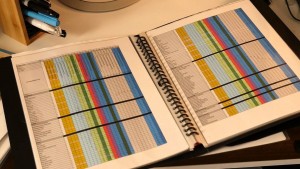 (“Prepare a Production Board & plan a Shooting Schedule.”)
(“Prepare a Production Board & plan a Shooting Schedule.”)
The basic rules are…
If No-Budget: You are a 1-week or even a weekend shoot.
If Micro-Budget: You are a 2-3 week shoot.
If Low-Budget: You are a 4-5 week shoot.
If Medium-Budget: You are a 2-month shoot.
If Mega-Budget: You are a 5-6 month shoot on 2-3 continents.
Nest, let’s think crew.
STEP 8: HIRE A CREW.
Do not get over-whelmed with 70-100 credits in a movie’s Rear Title Crawl; you the Producer-Director are only going to hire 4-5 Key People and they in turn each hire 3-7 people for your first feature film.
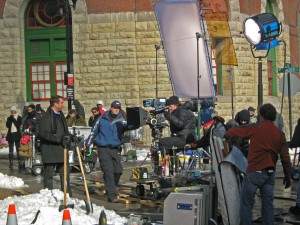 (“Your DP, PM & PD will hire 90% of your crew…let them.”)
(“Your DP, PM & PD will hire 90% of your crew…let them.”)
The 4-5 Keys you hire are…
(1) Cinematographer / Director of Photography / DP
(2) Production Manager / Line Producer / PM
(3) Production Designer / Art Director / PD
(4) Assistant Director
(5) Production Coordinator / Office Manager
Think hiring post production crew for edit, music, sound and lab, when low-budget to no-budget, after you have shot your film.
The question you must ask yourself is, “Is your shoot a Union Shoot or Non-Union?”.
If a Union Shoot (Union for crew is called “IATSE”) then get the rates from IATSE and fill in the numbers, but be sure to include over-time, meal-time, travel, penalties, etc.
If Non-Union (you can still hire “IATSE” but are paying non-union wages) then you determine what you can afford.
Once you have your Keys you then start thinking equipment.
STEP 9: RENT YOUR EQUIPMENT.
Do not buy equipment to make a movie.
Why?
 (“I promise that my 30-Lesson “DVD Film School” is better than spending 2-4 years and $100-250K at schools like NYU or USC… www.WebFilmSchool.com”)
(“I promise that my 30-Lesson “DVD Film School” is better than spending 2-4 years and $100-250K at schools like NYU or USC… www.WebFilmSchool.com”)
Because you likely will produce or direct one movie once every 2-3 years. Why buy? Especially when technology is changing so quickly.
Let technology evolve, let others buy and then you rent the best, for a fraction of the price of buying and watching your equipment grow obsolete.
Again… rent don’t buy.
(1) Rent Cameras (ask your cinematographer)
(2) Rent Sound (the equipment comes with the soundman)
(3) Rent Lights (get a gaffing truck with lights, cables & generator)
(4) Rent Grip (get a grip truck that comes with rigging, ladders, stands, etc.)
(5) Rent a Dolly & possibly Steadi-Cam (Chapman or Fisher, ask your DP)
(6) Buy Expendables (items you use once and can’t use again… tape, batteries, filters, etc.)
And for all the trucks and equipment make sure you plan for parking availabilities at your locations.
Locations… OK lets think locations
STEP 10: SECURE YOUR LOCATION.
Read your script and do a LOCATION BREAKDOWN sheet listing the locations (3-5) and sets (7-10) you need to either build or secure.
When renting locations (aka: practical sets) make sure (A) parking is available, (B) electricity is available, (C) photocopy stores are close and (D) you know where the closest police station, fire station and hospital are.
If budget permits you might be able to afford a soundstage to rent and have the luxuary of building sets with moveable walls, with high ceilings for excellent lighting and a quiet & controllable atmosphere (turn the AC off) to record great sound.
Always remember: Utilize your local film commissioner for 100s of locations (houses, restraunts, parks, schools, etc.) for they maintain a list of people and companies that desire to rent their property to those-movie-people… and you qualify as one of those-movie-people.
Simultaneous to scouting you and your director are busy casting.
Once casting is complete let’s get to rehearsal and shoot.
STEP 11: REHEARSE & SHOOT.
Your shoot, for your first feature film, is likely to be a 1-3 week shoot.
 (“Can’t wait for my “DVD FILM SCHOOL”/ Then get the info instantly ON-DEMAND, with workbooks, for only $89-149… www.WebFilmSchool.com.”)
(“Can’t wait for my “DVD FILM SCHOOL”/ Then get the info instantly ON-DEMAND, with workbooks, for only $89-149… www.WebFilmSchool.com.”)
If you are No-Budget (1-week shoot) you plan a shooting schedule of 9-10 pages/day.
If you are Micro-Budget (2-3 week shoot) you plan a shooting schedule of 5-7 pages/day.
If you are Low-Budget (4-5 week shoot) you plan a shooting schedule of 4-5 pages/day.
If you are Medium Budget (2-month shoot) you plan a shooting schedule of 2-3 pages/day.
If you are a studio feature, with a Mega-Budget, you plan a shooting schedule of less than 1 page/day.
For each shoot & schedule do the best you can to allow the actors, with the director, time to rehearse.
And once the final shot is captured, say good bye to the cast & crew and prepare for the Edit.
But be very careful when you get your “Martini Shot”.
STEP 12: PLAN POST-PRODUCTION, EDIT & SCORE.
Always remember when you get your final shot (USC Film School calls it “Martini Shot”) that you have $100K-$200K of equipment and thievery does exist.
So make sure, when you get the “Martini Shot”, the PM (Production Manager) and PC (Production Coordinator) inventory everything, to include props and wardrobe, and nothing is Missing, Stolen or Damaged and readied for return to the rental facility.
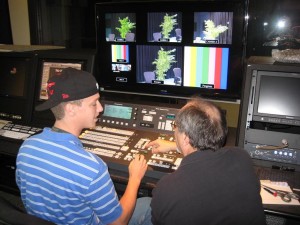 (“Post-Production is an easy process, just go step-by-step-by-step… Your seasoned DP will be there with you.”)
(“Post-Production is an easy process, just go step-by-step-by-step… Your seasoned DP will be there with you.”)
Now plot out a Micro-Budget (1 month) or Low-Budget (2-month) or Medium-Budget (3 month) period of time to execute the steps of post-production which are…
(1) PICTURE EDIT
(2) SOUND EDIT
(3) ADR (Automatic Dialogue Replacement)
(4) FOLEY
(5) MUSIC – SCORE
(6) RE-RECORDING SESSION – MIX
(7) DIGITIZING, COLORING & CUTTING (if film)
(8) FINAL PRINT or DCP (festival ready)
Voilla. Your film is finished.
Now what and hopefuly you’ve kept a little money for marketing & film festivals.
STEP 13: FESTIVALS, MARKETING & DISTRIBUTION.
When midway into post-production (likely around Foley time) you start thinking about Film Festivals (which to attend) and Distributors (how to secure).
Put aside $5,000-7,000 for marketing. Create a proper web site, a facebook page and start blogging to attract attention for your Festival premiere.
 (“Of 3,000 Festivals only 12 have merit…and my DVD or Streaming Film School list the 12, their dates and costs.”)
(“Of 3,000 Festivals only 12 have merit…and my DVD or Streaming Film School list the 12, their dates and costs.”)
Book a Film Festival… But it is important to know that Film Festivals are not free… They cost money.
Plus 99.8% of the Film Festivals, for getting a distributor and/or selling your film, are useless.
Today there are 3,000-5,000 Film Festivals.
However, only 10-12 Film Festivals (Sundance, Cannes, Toronto, NY/Tribecca, Berlin, etc.) have merit.
Why?
Because these 10-12 Film Festivals are where the buyers (Acquisition Executives for Distributors & Program Executives for Networks) attend.
Your job as a filmmaker is get your film into a film festival that the top 40-50 buyers attend and to make sure that they “all” attend your screening.
On later posts and in my Film School programs I detail Distributing, Selling, Profiting, Revenues, how to maximize them and how to create a franchise by producing Part II, III, IV, etc. of your movie.
Think “SAW”, “SAW-2”, “SAW-3”, “SAW-4″….
Now let’s think money and profits (I told you it’s called “Show Business”).
STEP 14: MOVIE MONEY and PROFITING.
There are 32 IPRs (Intellectual Property Rights) connected with a feature film… IPR is a Hollywood way of saying a Revenue Stream… and for laymen talk a revenue stream is where you get money.
You’ve made-a-film.
Now you have to make-a-movie.
Huh?
When does a film become a movie?
ANSWER: When it is in a movie theater charging admission? For when your film is in a movie theater, the cost is $10-$15, and your film is now a commodity… a movie with a value ($10-15) attached to it.
Films have no value. Movies are worth $10-$15.
Your distributor, obtained at a festival, will pay for the P&A (Prints & Ads), put it in theaters and then, after a weekend, announce the movie has grossed (Box Office Gross, Theatrical Revenue is an IPR), which is the term for what theater owners collect. Not Distributors collects. And definitely not Producers collect.
However, there are 31 other IPRs (Revenue Streams) where 90-95% of profits, not gross, come from which are…
(A) TRANSACTIONAL ON-DEMAND
(B) SUBSCRIPTION ON-DEMAND
(C) AD SUPPORT ON-DEMAND
(D) FOREIGN THEATRICAL LICENSING
- England, Germany, France, Spain, Italy, etc.
- Hong Kong, Taiwan, Malaysia, Singapore, Indonesia, etc.
- China, China, China, China & China
- Australia, New Zealand, South Africa
- Israel, Turkey, Dubai, Abu Dhabi, Egypt, Jordan, etc
- Mexico, Brazil, Argentina, Peru, Chile, etc.
(E) PAY-PER-VIEW
(F) DVD/BLU RAY SELL THROUGH
 (“Yes this is a business. It’s called “Show Business” and I beg you to get/attend any of my 3 affordable film programs ($89-$389) so that you can understand the business, profit, enjoy life and then make art.”
(“Yes this is a business. It’s called “Show Business” and I beg you to get/attend any of my 3 affordable film programs ($89-$389) so that you can understand the business, profit, enjoy life and then make art.”
(G) DVD/BLU RAY RENTAL
(H) DVD/BLU RAY DISCOUNT SELL-THROUGH
(I) PAY-CABLE (HBO, Showtime, etc)
(J) BASIC CABLE (TNT, TBS, Bravo, A&E, etc.)
(K) TV LICENSING
(L) BOOK RIGHTS
(M) MUSIC RIGHTS
(N) SERIALIZATION RIGHTS
(O) EDUCATIONAL RIGHTS
(P) PRODUCT PLACEMENT
(Q) MERCHANDISING, LICENSING, BRANDING, RETAILING, etc.
(R-V) ? ? ? ? ? ?
I think you’re getting the point.
The key is make a film.
Get it into a premium festival.
Get a Distributor (P&A money) who makes it into a movie…
And, to Profit… you keep 10-25 of the other IPRs / Revenue Streams to cash in…
Happy Filmmaking…
Dov Simens
XXXXXX
20-HOUR (Live, DVD or On-Demand) FILM SCHOOL
Want facts not theory… Then my Film Schools ($89-$389) are perfect.
Enroll. Graduate. Write. Produce. Direct.
Next “HOLLYWOOD (2-Day) FILM SCHOOL” sessions are April 8-9, 2017 or August 19-20, 2017.
Keep Up to date…
Join our e-mail list.
http://webfilmschool.us10.list-manage.com/subscribe/post?u=313d0b336735c6d5fbf1a8e9d&id=2c55446523
*** NO-BULL ***


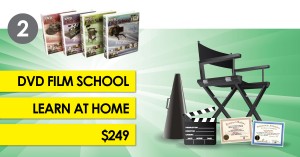
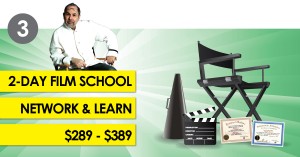
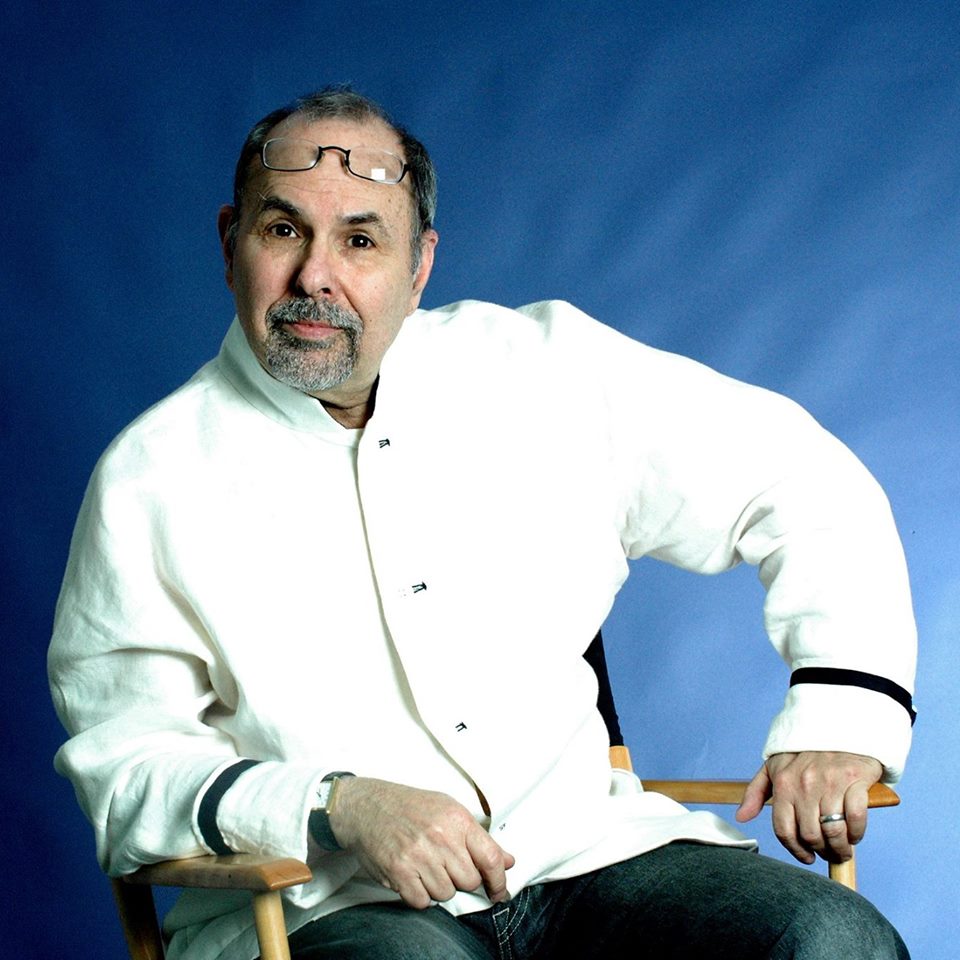
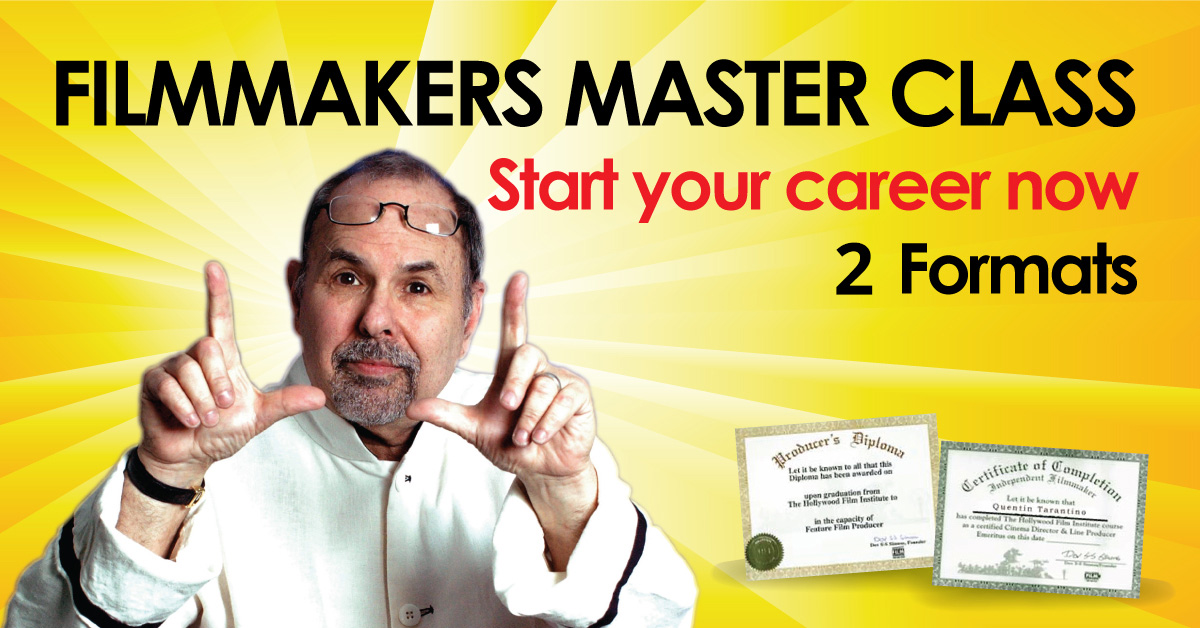

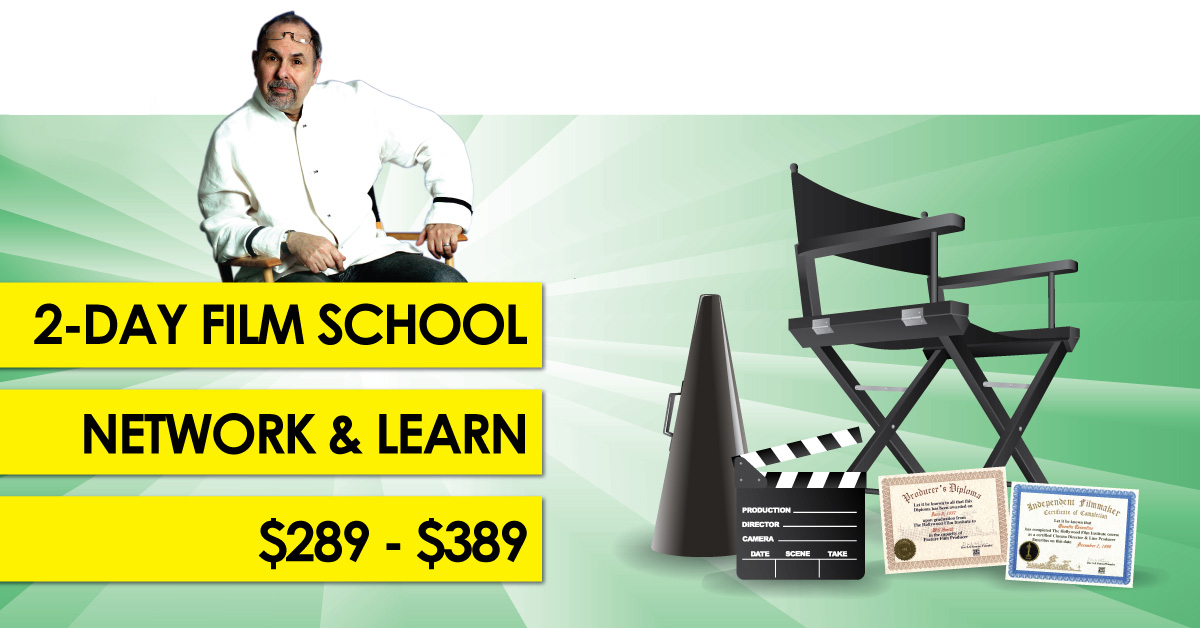
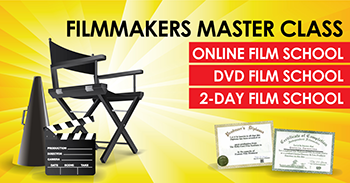
forgot to add the most important step. How to raise money. He’s made no movies. Sounds like bull to me. I mean if you have to say No Bull… Chances are…
his students have made movies
read the big names that used his course to launch their careers
quentin tarentino will smith many others
plus look at the success his ‘minor’ students have had
as he said it is your talent luck and hard work that determines the outcome
but i would bet on dov and his guidance before plunking down big bux to go to some film school at a big or medium name uni
While it’s good to know about how to bring your script into a full blown production, yet to get the money is the hardest part. No investor will back up a producer with no track record nor an executive producer who have had the opportunity to help fund projects. How do you go about getting these people? you can’t acquire any of the staff such as a DP, PM, PD, etc, if you don’t have seed money. It is tough to break through, why?
take dov’s dvd course
and read his other blogs
he covers the process
of course you wont raise millions as a noobie
you will have to start at the bottom and prove your worth
then build up to larger and bigger projects as you continue to deliver the goods
read his other blog posts and take his dvd course
for $249 you will get the entire big picture of how things work
and if you need more help then you can fill in with specific books as needed
look at his other blog posts first and get a good idea of what things you have to do to make it
Hey Sixer,
Thank you,
Dov
Tony,
Because this is a business and you are approaching it as if it’s an art form.
Dov
http://www.WebFilmSchool.com
sam k – you need to read his other blog posts
he has addressed raising money
the one he sent yesterday was on making a ‘no budget’ movie
Your step by step guide is a valuable resource for aspiring filmmakers. The emphasis on a Beat Sheet and the importance of rewriting highlights the dedication required for success in the industry.
Hard Drive Recovery Services in Riverside
Filmmaking might seem easy from a distance, with its glamour and creative appeal, but the reality often involves a mix of technical challenges, collaborative efforts, and countless hours of planning. From writing a compelling script to managing logistics and ensuring the final product resonates with the audience, every step requires dedication and skill. While modern tools and resources make certain processes more accessible, the journey still demands passion and persistence.
If you’re involved in international film projects or legal documentation, acquiring nbi clearance for documents could be a vital step, ensuring all your paperwork aligns with requirements. This ensures a smoother path to focus on the creative aspects of filmmaking.